Kitchen Worktops Installation – Ideas And Advice
How To Fit Kitchen Worktops
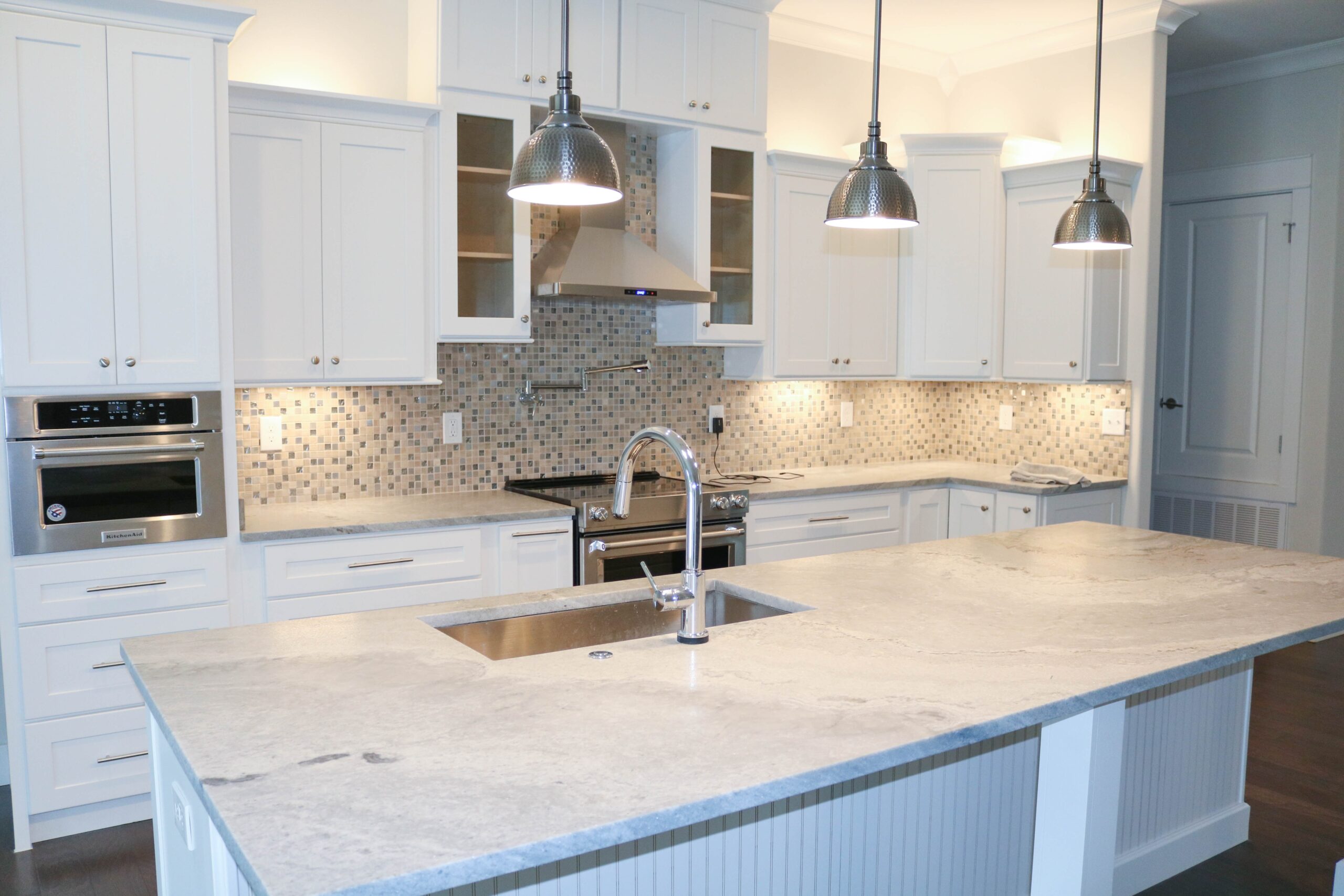
Fitting kitchen worktops, while not a particularly tricky or complicated job, does require a few simple steps and tools to ensure the process is carried out correctly. With that in mind, here’s what you need to do:
1. Measure the length and width of your existing worktop area. You will need to consider whether you are replacing an old worktop or covering up any existing surfaces such as tiles. Also, be sure to measure from wall to wall including any obstructions such as shelves or cupboards.
2. Select your desired material for the new worktop – popular materials include laminate, solid wood, granite, quartz stone, or an engineered solid surface like Dekton or Corian – and order one which fits your measurements. Ensure that it arrives flat and undamaged.
3. Using a circular saw, carefully cut the worktop to size, keeping in mind that you may need to trim any edges which are too large for your space.
4. Lay out the worktop on a flat surface and check that it fits into the area correctly. If necessary, mark any adjustments required with a pencil or chalk before cutting again with the saw.
5. Apply glue to the underside of the worktop and place it in position over existing surfaces (or directly onto base units). Press down firmly to ensure an even adhesion along all sides and then use clamps to hold it in place while drying overnight.
6. Once dry, fill any gaps between joints with sealant and fit corner brackets to reinforce any areas which require additional support.
7. Finally, check to ensure that the worktop is level and secure before adding edging strips for a professional finish.
Your kitchen worktops are now ready for use! With these easy steps, you can be confident that your new surface will look great in your home and help create an environment that is inviting and stylish. Enjoy the transformation!
Request Quote
Can you fit your own kitchen worktop?
If you are confident in your DIY skills, then fitting your own kitchen worktop is a great way to save money. Before attempting the job yourself, however, it’s important to consider very carefully whether you are up to the task. Fitting a kitchen worktop correctly requires accuracy and skill with tools; if these are not your strong points then it may be best to leave the job to a professional.
You’ll need to make sure you have all of the right tools and materials before getting started, including a saw, jigsaw, measuring tape, spirit level, screws, and silicone sealant. The worktop will also need careful cutting and edging to fit your kitchen layout – if this is something that you’ve never done before then it’s best to get some help from an experienced fitter.
Once the worktop is in place, there will need to be an air gap between the surface and any wall units that are close by – this can be achieved easily with a few strips of timber or plastic spacers. Finally, it’s important to seal the edges of the worktop with silicone sealant in order to make it waterproof.
Doing a good job of fitting your own kitchen worktop can be very satisfying, but it’s important to remember that it takes time and skill – if you don’t feel confident then it may be best to leave the job to a professional. With careful planning and preparation, however, you can save money by fitting your own kitchen worktop.
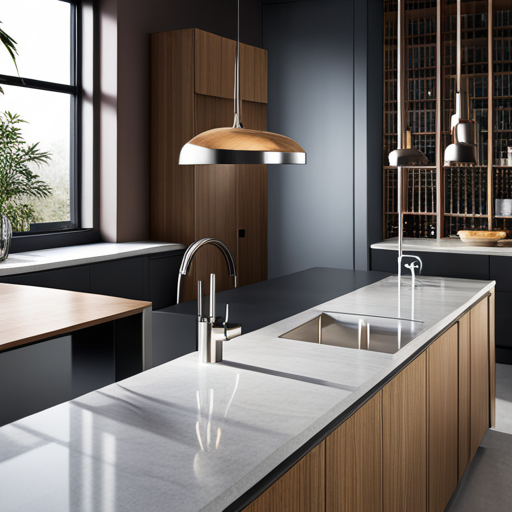
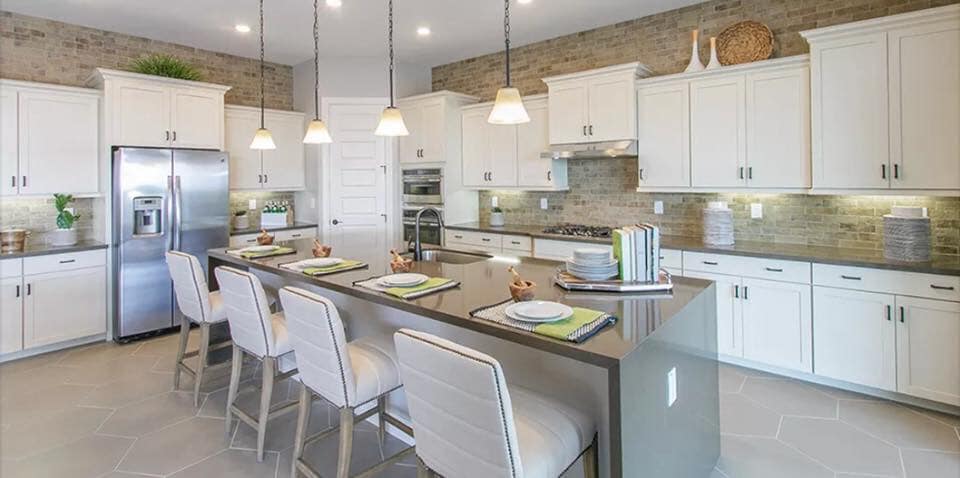
How do you support a kitchen worktop?
When installing a kitchen worktop, the key goal is to provide enough support while making sure that it’s level and secure. The amount of support needed will depend on the size and weight of the worktop, as well as the type of material used.
The most important factor in providing support for a kitchen countertop is to use adequate bracing. Braces should be placed along the length of the worktop, and at least two across its width. These braces will help distribute weight evenly, thus preventing sagging or bowing in the middle. It is important that these braces are securely attached to either a wall stud or rafter for maximum support.
In addition to braces, you can also use corbels or brackets to provide extra support for your worktop. These should be placed underneath the front and back edges of the worktop, and they can be screwed into either studs or rafters. Alternatively, you can also use a solid wood backing board cut to fit the length of your countertop for an added layer of support.
Finally, when installing a kitchen worktop, you should always use silicone sealant to ensure that no water or moisture gets into the joint between the countertop and the wall. This will help prolong the life of your worktop and prevent any warping or cracking from occurring.
How do you secure a worktop to the wall?
Securely mounting a worktop to the wall is essential for ensuring the safety of both you and your workspace. Here are some tips on how to secure a worktop to the wall:
Measure twice, cut once! Start by measuring out where you want your worktop to go and use a ruler or straightedge to make sure it’s even.
Next, cut out holes in the wall where you will be placing the brackets that will hold the worktop in place using a drill or a jigsaw. Make sure to wear protective gear when doing this!
After cutting all your holes, secure metal or plastic brackets to the wall with screws. Depending on how big and heavy your worktop is, you may need more than one bracket for support.
Lastly, place the worktop on top of the brackets and use screws to secure it in place. Make sure to check that all screws are tight before using your worktop!
Following these tips will ensure that your worktop is securely fastened to the wall and ready for use! Always remember to be careful when drilling or cutting into walls, and make sure you take any necessary precautions while doing so.
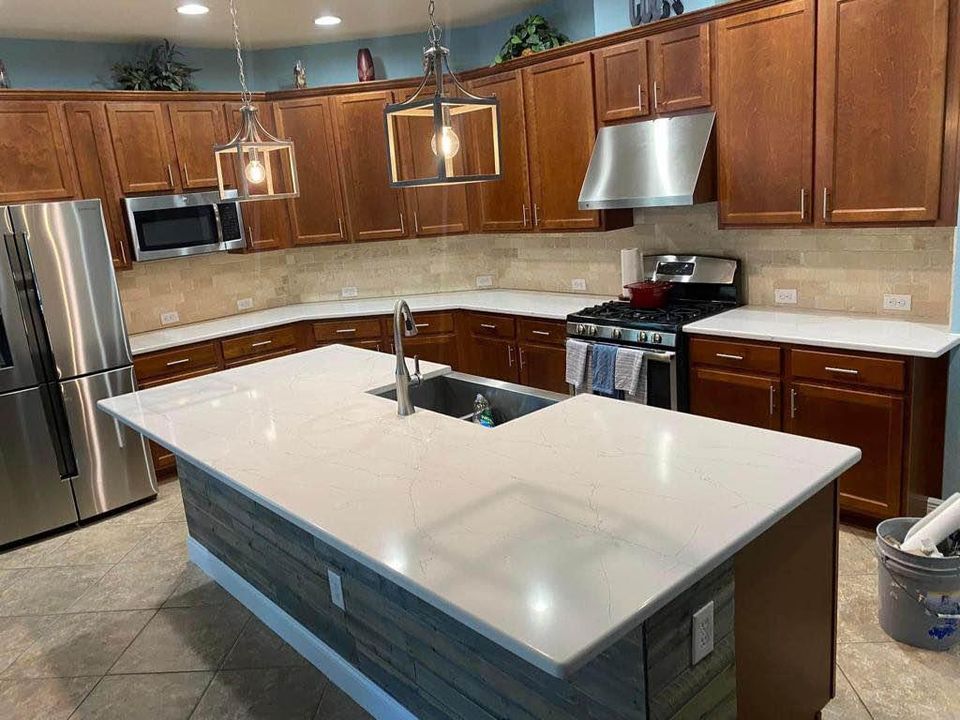
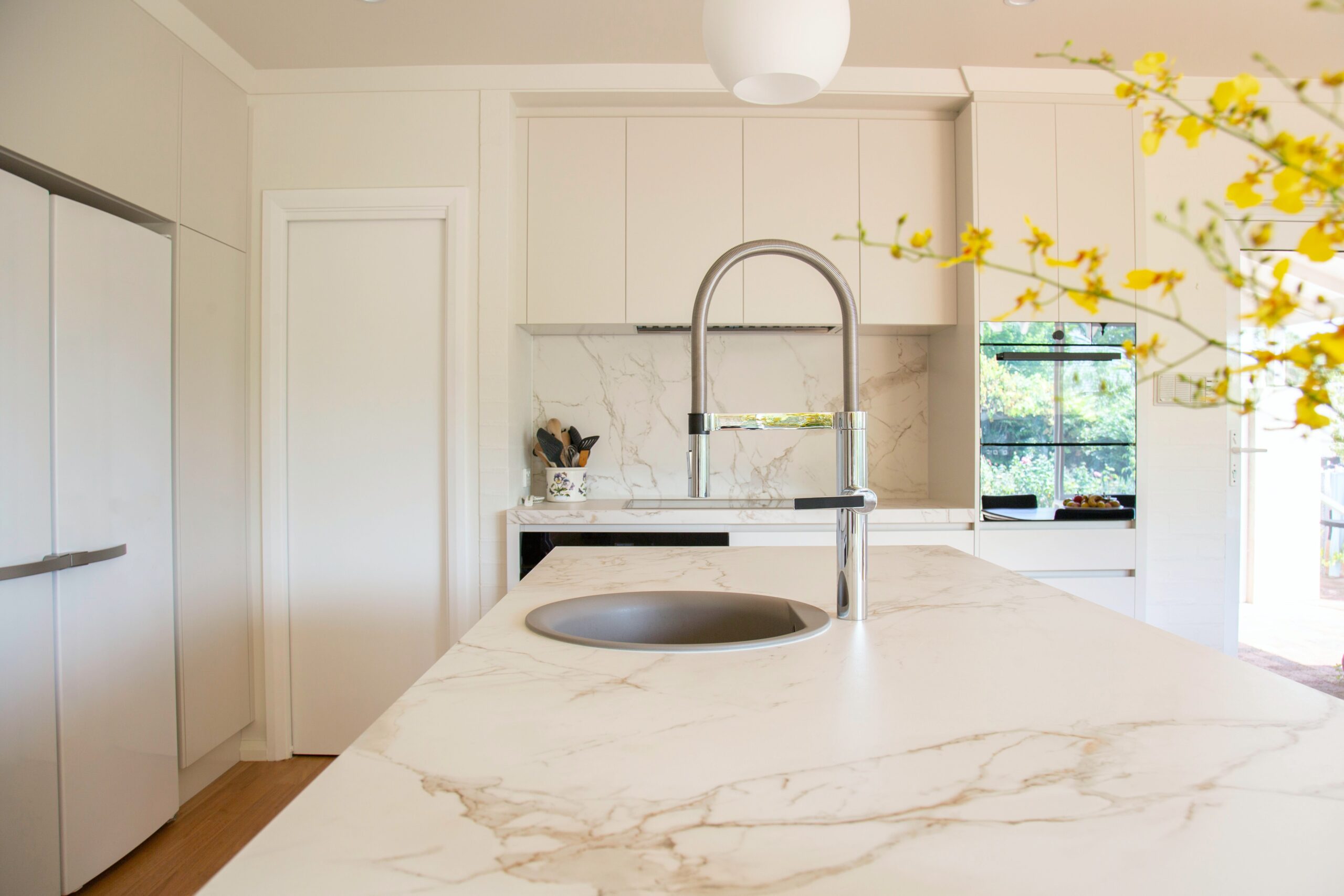
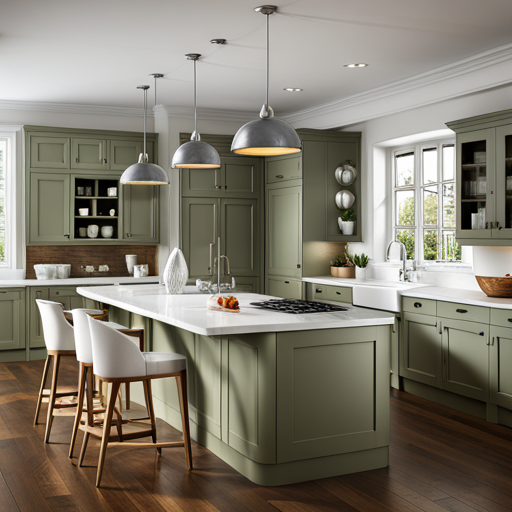
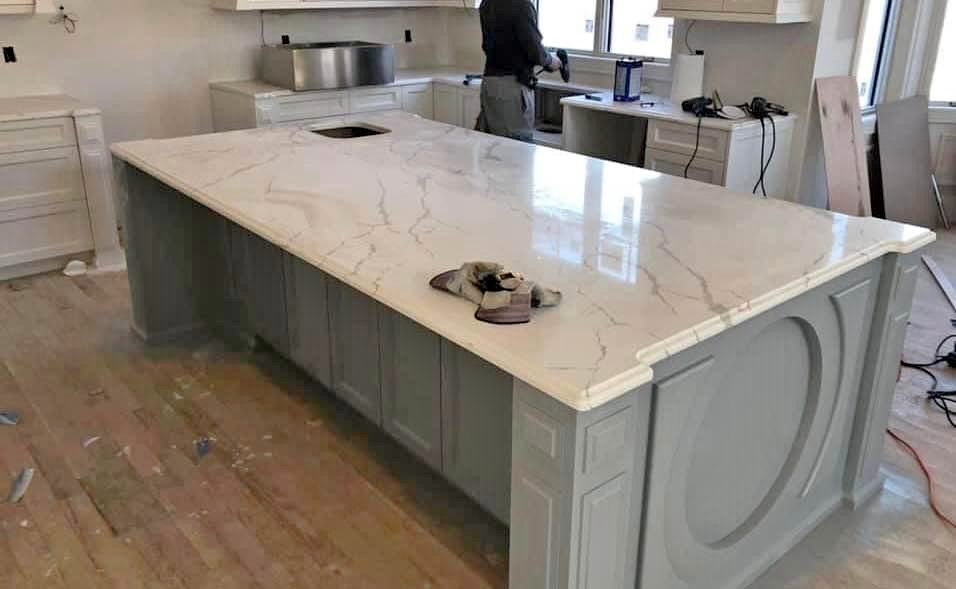
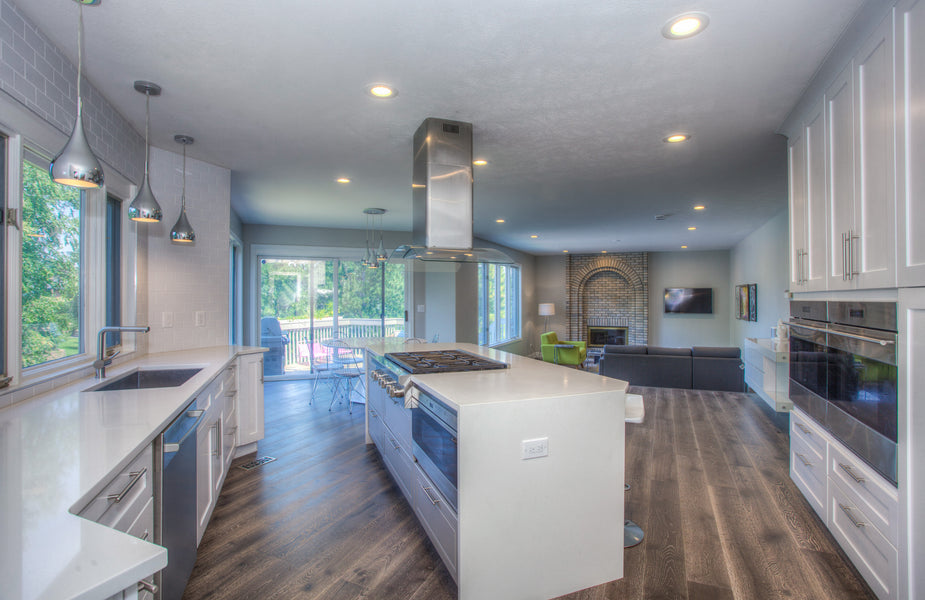
How much support does a kitchen worktop need?
Kitchen worktops, such as those made from quartz or granite, are extremely durable and heavy and require a robust support structure. To guarantee the longevity of your worktop, it is important to ensure that it has adequate support.
When installing a kitchen worktop, it is essential to use suitable brackets at all points where the counter meets a wall, cabinet, or another support surface. This will ensure the worktop is securely fixed and can bear the weight of any items placed on it. The distance between each bracket should not exceed two metres, with additional support posts added for greater spans.
It is also important to make sure that the brackets are properly secured into studs and other solid points of attachment in walls, cupboards, and cabinets. This will ensure the worktop is firmly held in place and prevent any future movement or damage.
Finally, it is important to remember that the thickness of a kitchen worktop can affect how much support it requires. Generally speaking, thicker worktops require more support than thinner ones due to their increased weight-bearing capacity. If you are unsure about the thickness of your worktop, it is best to consult a professional to ensure that adequate support is provided.
By taking these steps, you can ensure that your kitchen worktop is securely fixed and able to withstand any weight placed upon it. Doing so will help guarantee the longevity of your worktop and keep it looking its best for years!
Do you glue worktop joints?
It is possible to glue worktop joints, but it is not always the best choice. Depending on the type of material used and the type of joint to be glued, there are several factors that should be taken into account when deciding whether or not to glue a worktop. Glueing can help reduce separation between boards at a joint, but it does not add strength to the joint itself. The use of mechanical fasteners or other reinforcement techniques is often recommended before glueing a worktop joint. Furthermore, using the wrong adhesive can cause warping and discoloration of the material, resulting in an unsightly result. It is best to consult a professional when considering gluing worktop joints to ensure that it will provide a secure connection and an attractive result.
How much should a worktop overhang?
The amount that a worktop should overhang will depend on how it is to be used. For example, if the worktop is being used in a kitchen, then it typically should overhang by between 150 – 200 mm to provide enough space for bar stools or seating underneath. On the other hand, if it’s being used as a desk or dressing table, then a smaller overhang of between 100 – 150 mm is usually more appropriate. It’s also important to take into consideration the thickness of your worktop when deciding how much it should overhang; if the counter top is thicker than normal, then you may need to allow for a greater amount of overhang. Additionally, any adjacent cabinets or appliances should be taken into account, as you don’t want the worktop overhang to interfere with their design or function. When in doubt, it is best to consult a professional contractor or kitchen designer for advice on how much your worktop should overhang. Additionally, make sure that any measurements are double-checked before cutting the worktop to ensure accuracy. This will help to ensure that you get the best results.
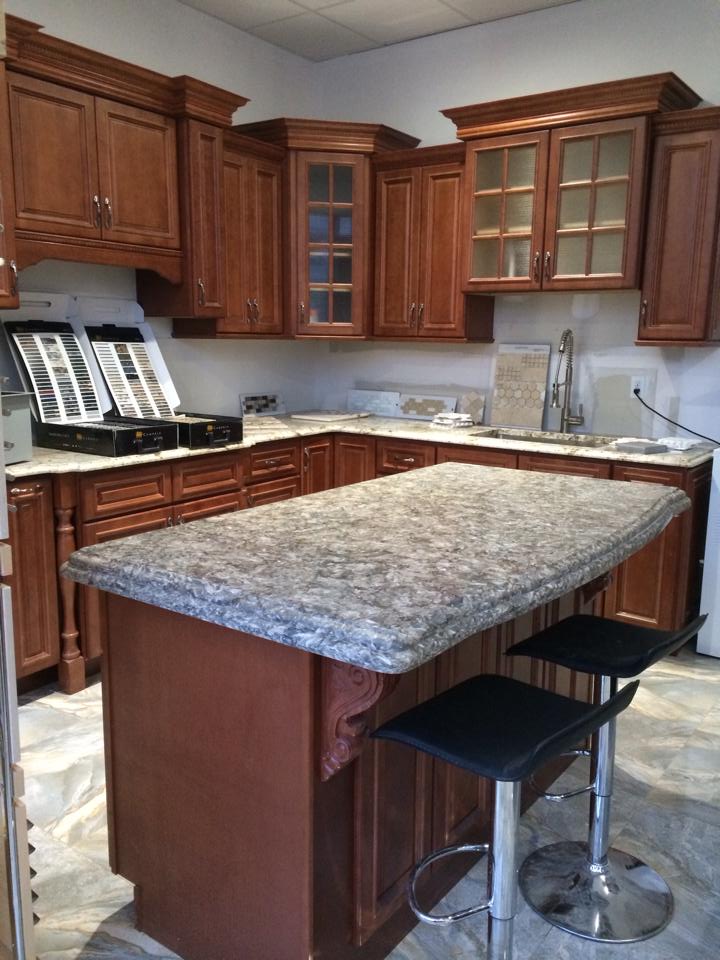
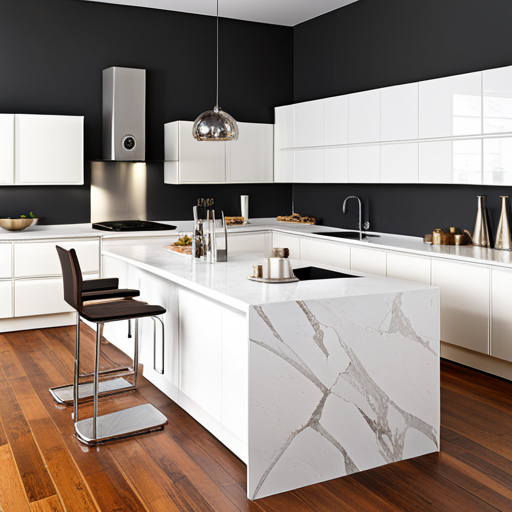
What tools do I need to fit a kitchen worktop?
Fitting a kitchen worktop can transform the look of your kitchen, and give it a whole new lease of life. In order to fit the worktop properly, you need to have the right tools for the job.
The most important tool you will need is a jigsaw, which is used to make precise cuts in the worktop material. You should also have a jig saw guide, which will help you to make straight and accurate cuts. Additionally, it’s helpful to have a measuring tape and square for taking precise measurements and marking them on the worktop material.
Additionally, you’ll need a drill with different-sized drill bits in order to make holes in the material for your fittings. A hammer can also be useful in fitting the worktop, particularly if you need to knock it into place.
Finally, it can be helpful to have some sandpaper on hand in order to smooth down any rough edges that were created while cutting.
By ensuring you have all of the necessary tools before beginning your worktop installation, you can rest assured that the job will be done correctly and to a high standard.
Visit Us
Doncaster, United Kingdom
Message Us
hello@kitchenworktopsdoncaster.co.uk
Get an Online Quote
Get Started
